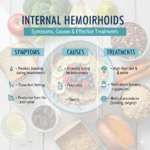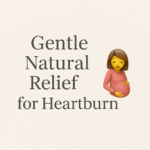We’ve all felt nervous before like butterflies in the stomach before an exam, a race, or a big conversation. That’s normal.
But sometimes, that nervousness grows into something bigger your heart races, your hands shake, your breath feels trapped, and suddenly it feels like the world is spinning.
That moment is more than worry it could be an anxiety attack or a panic attack.
If you’ve ever felt this way or seen someone go through it please remember this
“You are not alone, you are not broken, and you can learn to calm it.”
content
Let’s walk through what’s really happening, step by step gently, clearly, and with care.
What Is Anxiety?
Imagine your brain has a small alarm system. It’s there to protect you like when a car is coming too close or a dog barks suddenly.
That alarm says, “Be careful! Something’s wrong!” and your body reacts. Your heart beats faster, your breathing changes, and your muscles tighten all to help you escape danger.
Now, that’s great when danger is real. But sometimes, that alarm rings even when you’re completely safe.
That’s called anxiety.
Anxiety happens when your mind keeps worrying about what might happen instead of what is happening.
For example:
- “What if I fail my exam?”
- “What if people laugh at me?”
- “What if something bad happens to my family?”
When those thoughts repeat, your body reacts like it’s in danger even though you’re sitting safely in your room.
That’s anxiety the fear of something that hasn’t even happened yet.
What Is an Anxiety Attack?
An anxiety attack is when those worries suddenly become so strong that your body starts reacting to them physically.
Restless or uneasy
Sweaty or shaky Like you can’t breathe deeply
Your stomach feels tight or sick
Your thoughts are racing, and you can’t stop worrying
Anxiety attacks often build up slowly. You might notice them growing stronger over minutes or hours.
They can last a long time sometimes 30 minutes or even longer and often come after a period of stress or overthinking.
The key thing to know?
Anxiety attacks are your body’s false alarm and they can be calmed down.
What Is a Panic Attack?
A panic attack feels a bit different it’s sudden, powerful, and often comes without warning.
One moment you feel fine, and the next, your heart starts pounding, your chest tightens, and you might think something terrible is happening like a heart attack.
Here are common symptoms of a panic attack:
- Rapid heartbeat
- NookShortness of breath or choking feeling
- Dizziness or feeling faint
- Sweating and trembling
- Chest pain or tightness
- Feeling detached from reality
- A strong fear of dying or “going crazy”
A panic attack can last anywhere from a few minutes to around 20 minutes but those minutes can feel endless.
The truth is a panic attack is not dangerous, even though it feels terrifying. It’s your body’s alarm going off too loudly and too suddenly.
Many people confuse the two, but here’s how to tell them apart clearly:
| Feature | Anxiety Attack | Panic Attack |
|---|---|---|
| How it starts | Builds up gradually from ongoing worry or stress. | Comes suddenly, often without warning. |
| Trigger / Cause | Usually linked to a specific stressor or worry (like exams, work, or relationships). | May occur with no clear trigger; can appear spontaneously. |
| Intensity | Mild to moderate uncomfortable but often manageable. | Very intense overwhelming physical and emotional symptoms. |
| Duration | Can last minutes to hours, sometimes longer if the stress continues. | Usually peaks within 10 minutes and fades within 20–30 minutes. |
| Main feeling | Worry about something that might happen (“what if…” thoughts). | Feeling that something terrible is happening right now (fear of losing control or dying). |
| Common symptoms | Tension, restlessness, racing thoughts, stomach upset, mild breathlessness. | Rapid heartbeat, chest pain, severe shortness of breath, dizziness, trembling. |
In short:
- Panic attack = a sudden storm that comes out of nowhere.
- Anxiety attack = a slow wave of worry that builds up.
Both are real, both can be overwhelming, but both can also be managed and eased.
What to Do During an Anxiety or Panic Attack
When your mind and body start to spiral, you can use simple steps to bring yourself back to calm.
Let’s go through them gently, one by one.
Step 1: Breathe Slowly and Deeply
When anxiety hits, your breathing becomes fast and shallow. That makes you feel dizzy or even more scared.
So, start by slowing down your breath.
Try this:
- Breathe in through your nose for 3 seconds.
- Hold that breath for 3 seconds.
- Slowly breathe out through your mouth for 3 seconds.
- Repeat this 5–10 times.
This signals your brain that you are safe and it starts calming your heart and mind.
Step 2: Remind Yourself “This Will Pass”
Say softly to yourself:
“I’ve felt this before. I’m safe. This feeling will pass.”
Reminding your brain that this is a temporary feeling helps stop panic from growing.
Your thoughts control your emotions more than you think so talk to yourself kindly.
Step 3: Use the 3-3-3 Rule
The 3-3-3 Rule is a simple but powerful trick that pulls your brain out of panic and back into the present moment.
Here’s how to do it:
- Look around and name 3 things you can see. Example: “I see a lamp, my phone, and a blue wall.”
- Listen carefully and name 3 sounds you can hear. Example: “I hear birds outside, a fan spinning, and someone talking.”
- Move 3 parts of your body Example: “I wiggle my fingers, roll my shoulders, and tap my toes.”
By doing this, your brain shifts focus from fear to reality it stops imagining danger and notices the world around you.
It’s simple, but it really works.
Step 4: Relax Your Body
When you’re anxious, your muscles tighten up.
So, gently relax your body unclench your fists, loosen your shoulders, and let your face soften.
If you can, sit down or lie somewhere comfortable and let your body rest for a few minutes.
You can even imagine a calm place like a beach, a garden, or your favorite room and picture yourself there.
Step 5: Ground Yourself With Your Senses
Try another grounding method: the 5-4-3-2-1 technique.
Name:
- 5 things you can see
- 4 things you can touch
- 3 things you can hear
- 2 things you can smell
- 1 thing you can taste
It helps your mind focus on the real world and slows down racing thoughts.
How to Prevent Future Anxiety or Panic Attacks
While panic and anxiety attacks can’t always be avoided, you can make them much less frequent with healthy habits.
Here’s how:
Get Enough Sleep
Your brain heals and resets while you sleep. Lack of rest makes your mind more anxious and emotional.
Eat Balanced Meals
Avoid skipping meals or having too much caffeine or sugar. These can make your heartbeat faster just like anxiety does.
Move Your Body
Go for walks, dance, stretch, or play outside. Exercise releases happy chemicals called endorphins that calm your brain.
Talk About Your Feelings
You don’t have to face it alone. Talk to someone you trust a friend, parent, teacher, or therapist.
Saying how you feel makes it lighter.
Practice Mindfulness or Meditation
Spend a few minutes daily just focusing on your breathing, or listening to calming sounds.
It trains your brain to stay in the present moment instead of worrying about the “what ifs.”
Avoid Negative Triggers
If social media, news, or certain people make you anxious take breaks. Protect your peace like it’s your treasure.
What to Say to Someone Having a Panic Attack
If someone near you is panicking, you can help them gently.
- Stay calm yourself.
- Speak softly: “You’re safe. I’m here with you.”
- Encourage slow breathing “Let’s breathe together.”
- Help them do the 3-3-3 Rule.
- Never say “Calm down” instead, say “It’s okay, this feeling will pass.”
Your calmness helps them find theirs.
conclusion
Anxiety and panic don’t make you weak. They show that your body feels deeply, that your brain is trying too hard to protect you.
It’s not your fault. And it’s not forever.
Every time you face an attack and breathe through it, you’re teaching your brain that you’re safe and you get stronger each time.
So next time anxiety knocks, smile gently and say:
“I see you. But I’m okay. You can go now.”
You’re not your panic. You’re the calm underneath it.







Leave a Reply